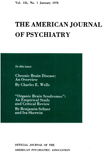THE GENETICS OF EPILEPSY
Abstract
Study of the incidence of epilepsy among 12,119 of the near relatives of 2130 epileptics and among 55 twin pairs affected by seizures, together with analysis of the brain wave records of 470 relatives and of the 55 twins, leads to the conclusion that epilepsy per se is not inherited but a tendency or predisposition usually is inherited. The terms, genetic and acquired epilepsy, should replace the meaningless conventional terms essential and symptomatic. Probably in most patients both genetic and acquired factors are present. The incidence of epilepsy is higher among the near relatives of epileptics if pathology of the brain did not antedate the onset of seizures, if the patient's epilepsy began early in life, if he was mentally abnormal at birth, if he has petit mal and if the patient is female.
The electroencephalogram is an hereditary trait and brain wave tracings, properly made and interpreted, may be of positive value in visualizing a transmitted quality which (with the possible help of acquired pathology or pathophysiology) may eventuate in epilepsy. The practical value of this evidence is limited, because cortical electrical activity is a fluid trait, dysrhythmia cannot always be demonstrated in patients, and tracings of relatives may display only minor deviations from normal. Therefore, negative electroencephalographic evidence may not be significant.
Access content
To read the fulltext, please use one of the options below to sign in or purchase access.- Personal login
- Institutional Login
- Sign in via OpenAthens
- Register for access
-
Please login/register if you wish to pair your device and check access availability.
Not a subscriber?
PsychiatryOnline subscription options offer access to the DSM-5 library, books, journals, CME, and patient resources. This all-in-one virtual library provides psychiatrists and mental health professionals with key resources for diagnosis, treatment, research, and professional development.
Need more help? PsychiatryOnline Customer Service may be reached by emailing [email protected] or by calling 800-368-5777 (in the U.S.) or 703-907-7322 (outside the U.S.).



